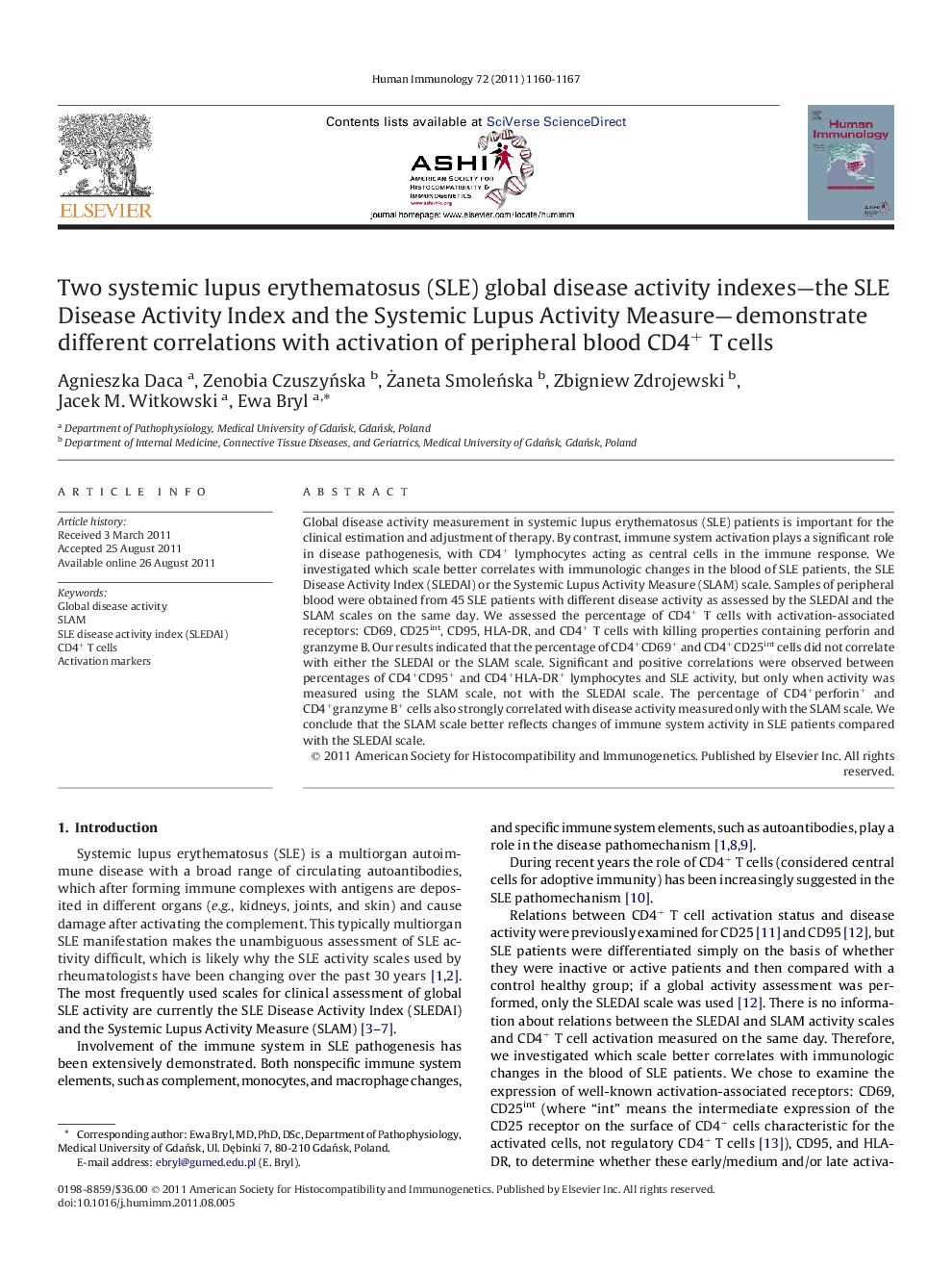| Article ID | Journal | Published Year | Pages | File Type |
|---|---|---|---|---|
| 6116874 | Human Immunology | 2011 | 8 Pages |
Abstract
Global disease activity measurement in systemic lupus erythematosus (SLE) patients is important for the clinical estimation and adjustment of therapy. By contrast, immune system activation plays a significant role in disease pathogenesis, with CD4+ lymphocytes acting as central cells in the immune response. We investigated which scale better correlates with immunologic changes in the blood of SLE patients, the SLE Disease Activity Index (SLEDAI) or the Systemic Lupus Activity Measure (SLAM) scale. Samples of peripheral blood were obtained from 45 SLE patients with different disease activity as assessed by the SLEDAI and the SLAM scales on the same day. We assessed the percentage of CD4+ T cells with activation-associated receptors: CD69, CD25int, CD95, HLA-DR, and CD4+ T cells with killing properties containing perforin and granzyme B. Our results indicated that the percentage of CD4+CD69+ and CD4+CD25int cells did not correlate with either the SLEDAI or the SLAM scale. Significant and positive correlations were observed between percentages of CD4+CD95+ and CD4+HLA-DR+ lymphocytes and SLE activity, but only when activity was measured using the SLAM scale, not with the SLEDAI scale. The percentage of CD4+perforin+ and CD4+granzyme B+ cells also strongly correlated with disease activity measured only with the SLAM scale. We conclude that the SLAM scale better reflects changes of immune system activity in SLE patients compared with the SLEDAI scale.
Related Topics
Life Sciences
Immunology and Microbiology
Immunology
Authors
Agnieszka Daca, Zenobia CzuszyÅska, Å»aneta SmoleÅska, Zbigniew Zdrojewski, Jacek M. Witkowski, Ewa Bryl,
